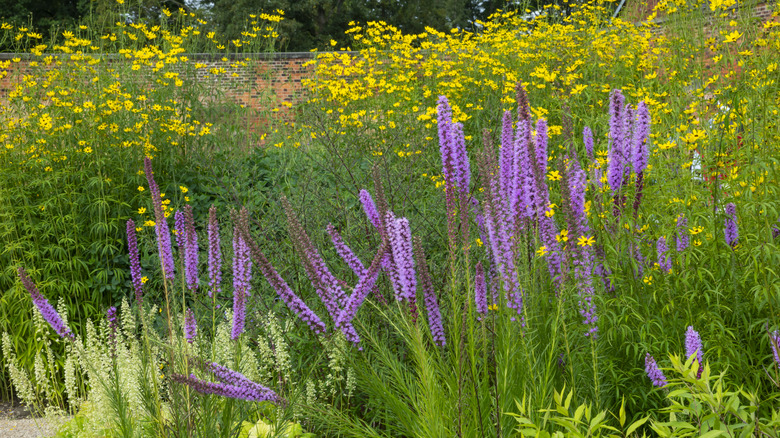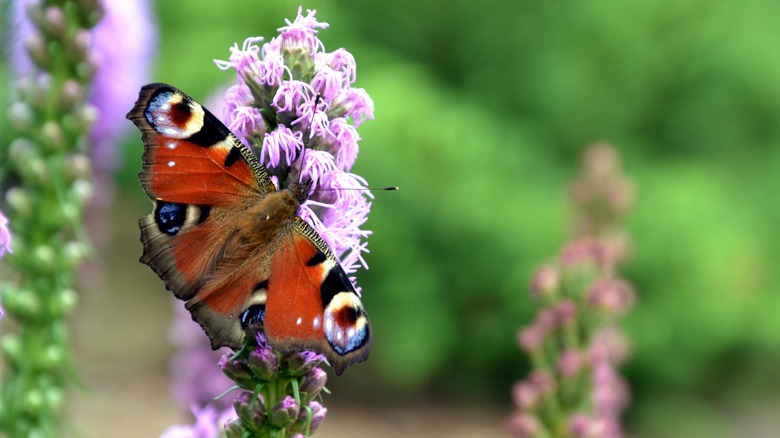When To Prune Blazing Star (& Other Winter Care Tips)
There are many reasons to include blazing star (Liatris), also sometimes known as gayfeather, in your garden. Birds and bees love this North American native perennial and it makes a great cut flower, but one of its best qualities is that, like many other natives, it's low maintenance — even when it comes to winter care.
While these plants come in many species that can differ in height and color, they all produce tall spikes of flowers that some think look like fireworks — hence the name blazing star. They are easy to grow and drought-tolerant, making them a great choice for sunny spots and gardeners who do not want to spend all their time watering finicky plants.
Still, all gardens need a little maintenance and depending on whether or not you like a tidy winter bed, you can decide to either cut back these plants or leave them alone. Blazing star seeds are a good source of food for birds in the winter, so if you don't mind the look, you may want to wait to prune until spring. Natives like blazing star attract birds to the yard, so why waste your money on bird seed when you already have a free source in your garden?
Winter care tips for blazing star
If you absolutely must prune blazing star at the end of the growing season, you can cut them back to the grassy leaves at the base in late fall or early winter, preferably after a frost. Leave the stalks as long as they are green to allow the root system to store energy for the winter ahead. We have already made the case that blazing star is an easy to grow perennial that will not need much help from you to thrive, and that's true in the winter as well. This fuss-free plant really only has one request when it comes to winter care: It does not want to be soggy, as most species prefer dryer conditions.
While you may be tempted to protect this plant from winter conditions, especially in places with harsh winters, remember that it's native, and as long as you have the right species, it should be well adapted to survival on its own. Therefore, do not heap mulch on top of this plant to protect it from bitter temperatures, as too much moisture can create rot. You can clean away any wet leaves or other soggy garden debris, but otherwise, leave blazing star alone and focus on the higher-maintenance plants in your garden.

